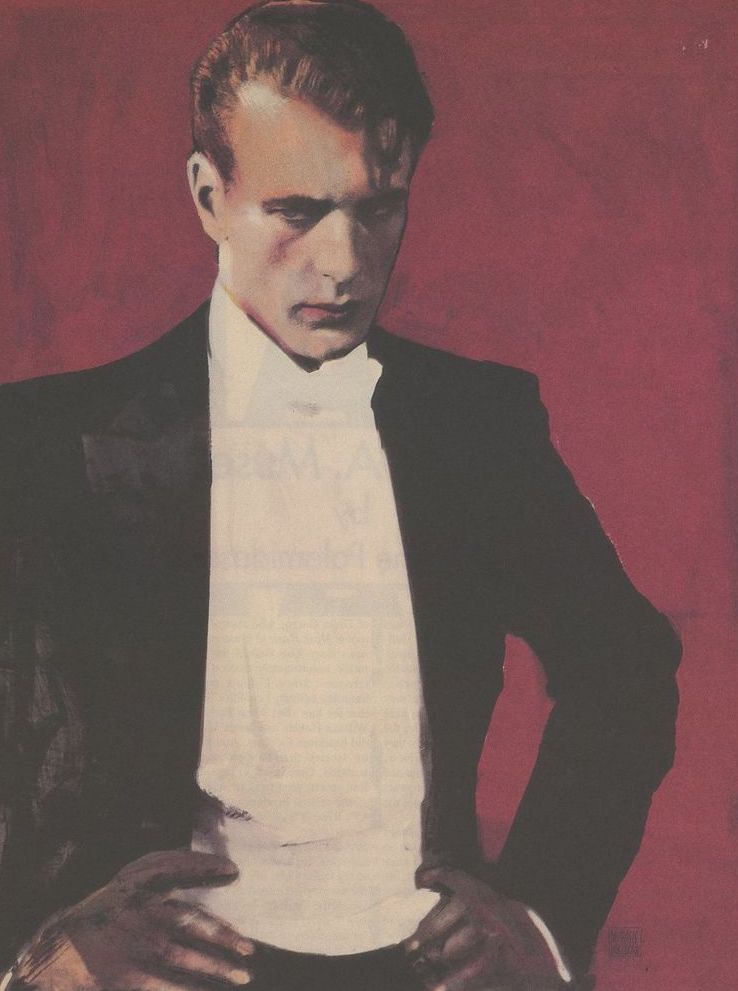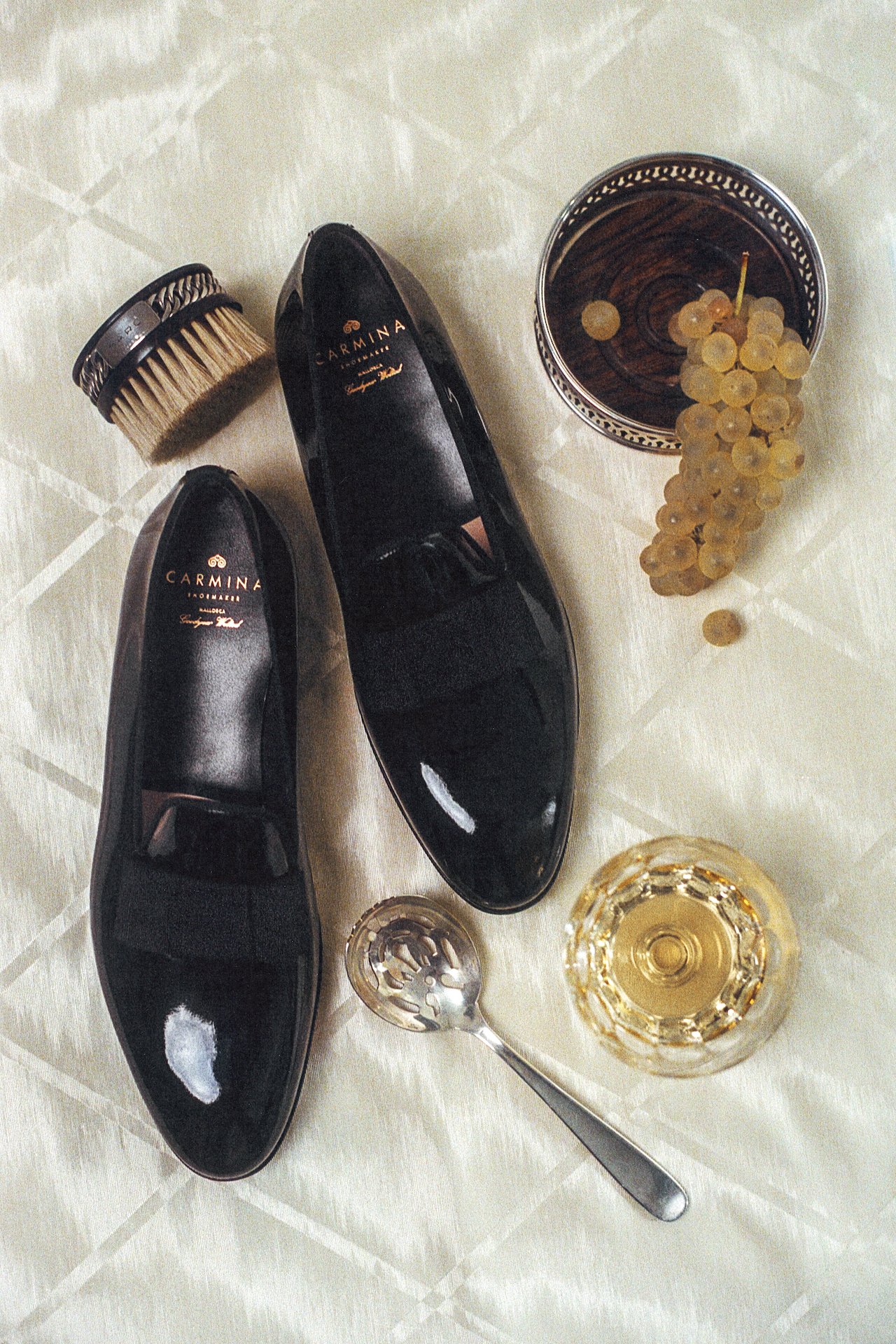WHITE TIE
STYLE
Written by James V. Thomas

Gary Cooper in white-tie attire, illustrated by fashion designer Michaele Vollbracht in Interview Magazine sometime in the 1980's.
White tie attire is the most formal way for a man to dress. The details involved are rather precise, but of course there are a few pieces that one can be a bit more creative with.
To begin, let's discuss the actual clothing itself.
1. A tail-coat with peak-lapels. The lapels and buttons should be covered in black twill silk / satin. There should also be a white linen pocket square and a boutonier to accessorize. The boutonnier should be a silken carnation. This is a very difficult piece to find, and should not be confused with a morning suit. Clearly the best option is to have it tailor-made; however, you may also find them occasionaly in the collections of brands such as Ralph Lauren Purple Label and Dunhill.
2. High waisted trousers in the same fabric as the tailcoat, with a silk band (or galon) running down the legs, can also be a double galon. Should be sold with the tail-coat.
3. Single or double breasted white evening marcella waistcoat. Marcella is another term used for piqué. As this is an evening waist-coat, the décolleté is very deep. Wearing a day waistcoat is reserved for work, not for soirées. Here, we want to see the studs and stiff front of the shirt. Another important note here is that the bottom of the vest should not go further than the trouser's waistband. There are a plethora of offers for these waistcoats, probably the easiest would be to acquire one from the same designer / tailor making the tailcoat suit. As with many high-end tailored garments, many of these will be found from English brands such as New & Lingwood.
4. A stiff cotton fronted shirt with wing tipped detachable collar, and single cuffs. Always accompanied by cufflinks and studs. Cuffs should come out about 2.5 cm from the end of the coat sleeve. This shirt should also come from your tailor as it is difficult to find them otherwise. One interesting company that is working with many traditional shirts is called Darcy Clothing.
5. Opera pumps (A.K.A. Court shoes) with a deep cut-out to better show the socks. The socks should be black shear silk socks and over the calf, Falke has lovely options. We recommend Carmina for shoes.
6. White leather evening gloves for outside - many glove brands to chose from, such as Handschuhe or Maison Fabre.
7. A white silk opera scarf. Our favorite is from Charvet, naturally.
8. A top hat is a possibility here, and generally recomended if you would like to adhere to the strict rules - It may come off as comical post Y2K, but this is your decision. If you must wear one, a black silk one would be perfect.
9. And of course, a white marcella bowtie to match the evening marcella waistcoat. It is imoprtant to have one that you must tie yourself, and a pre-tied knot will look too cheap considering the garments that you are wearing. Charvet is a great shop for this.
And to finish, the history of white tie attire.
The dress code's origins can be traced back to the end of the 18th century. New fully black-coloured justaucorps styles emerged around the Age of Revolution, notably adopted by the bourgeois third estate of the Estates General of the Kingdom of France. Increasingly following the French Revolution, high society men abandoned the richly decorated justaucorps coats for more austere cutaway dress coats in dark colours, with cuts perhaps further inspired by the frocks and riding coats of country gentlemen. Gradually replacing also breeches, lacy dress shirts and jabots with plain white dress shirts, shorter waistcoats, white cravats and pantaloons, this became known as directoire style. By the early 19th-century Regency era, dark dress tailcoats with light trousers became standard daywear, while black and white became the standard colours for evening wear. Although the directoire style was replaced for daytime by black frock coats and bowties by mid-19th century, cutaway black dress tailcoats with white bowtie has remained established for formal evening wear ever since.
Despite the emergence of the shorter dinner jacket (or tuxedo) in the 1880s as a less formal but more comfortable alternative, full evening dress tailcoats remained the staple. Towards the end of the Victorian era, white bow ties and waistcoats became the standard for full evening dress, known as white tie, contrasting with black bow ties and waistcoats for the dinner jacket, an ensemble which became known as semi-formal black tie.
Following the social changes after the First World War and especially with the counterculture of the 1960s, white tie was increasingly replaced by black tie as default evening wear for more formal events. Since the late 20th century, white tie tends to be reserved for the most formal evening occasions, such as state dinners and audiences, in addition to formal balls and galassuch as the Vienna Opera Ball in Austria, the Nobel Prize banquet in Stockholm, Mardi Gras balls in New Orleans, and the Al Smith Memorial Dinner in New York. White tie still also occurs at traditional weddings and church celebrations, at certain societies and fraternities, as well as occasionally around some traditional European universities and colleges.

Opera pumps from Carmina. Photography by Jeanne & Romain.
CREDITS
Written by James V. Thomas, references from Debrett's Etiquette Guide. Photography at the end by Jeanne & Romain.
Sky Blue
Est. 2019